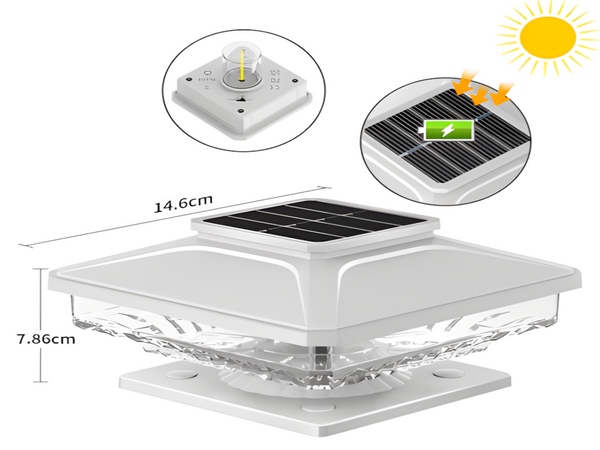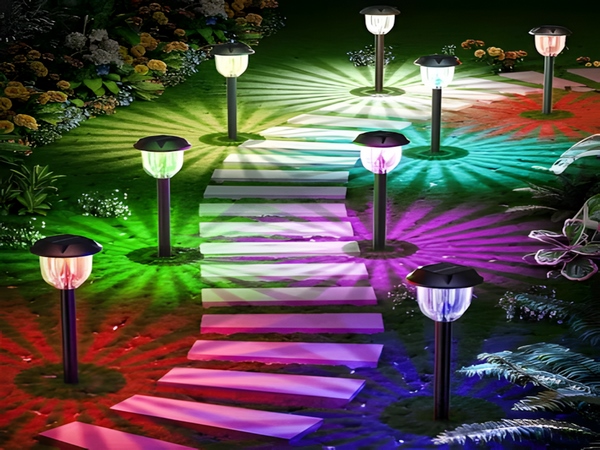
In order to better build cities, street lights in urban areas have generally been replaced with solar street lights, which are reasonably priced. The installation of traditional street lights used to be complex, requiring circuit laying and more; they also consume relatively high power and require high wattage light sources, which not only dims the lighting but also hinders urban illumination. Nowadays, solar street lights are particularly popular. How much do you know about solar street lights? Why is the market so booming?
Solar street lights are relatively inexpensive, energy-saving, and environmentally friendly, with installation procedures being simpler compared to traditional ones, as they do not require complex circuit laying. The price of solar street lights mainly consists of four components: LED lighting lamp, lamp pole, solar panel, and solar street light controller.
Resource conservation has become a global concern, so the invention of solar energy has brought great convenience to human life. China has relatively high solar radiation, making solar energy abundant. The price of solar street lights varies depending on specifications, ranging from 200 to 1000 yuan. Compared to traditional street lights, solar street lights are much cheaper. The varied prices are not only due to different materials but also due to brand choice. For consumers, a brand is also a guarantee of quality. Most solar street lights can light up for eight to nine hours on a full charge, which is a point to consider when choosing them. When selecting street lights, the specific road segment where they will be installed should be taken into account. Different road segments and environments require different specifications. For example, rural roads often have widths of less than 10 meters, generally between 4 to 6 meters, so the wattage of the lamp pole should be sufficient to illuminate that width.
The working principle of solar street lights: During the day, under the control of an intelligent controller, solar panels absorb sunlight and convert it into electrical energy. The solar battery modules charge the lithium batteries during the day, and at night, the lithium batteries power the LED light source to achieve illumination. The DC controller ensures that the lithium batteries are protected from overcharging or discharging, and it has features such as human sensing, light control, time control, temperature compensation, lightning protection, and reverse polarity protection.
Components of solar street lights:
1. Solar photovoltaic components
The components are generally divided into two parts: monocrystalline and polycrystalline. Both monocrystalline and polycrystalline also have A-side and B-side, which is why the prices of components with the same configuration can differ significantly, and ordinary people cannot see the differences from the outside. The function of the module is to convert solar energy into electrical energy and store it in batteries. Currently, the conversion rate of monocrystalline is up to 17%, while that of polycrystalline is about 12%.
2. Special solar batteries
Serving the function of storing and releasing electrical energy, the batteries can be installed on the lamp pole or buried underground. The battery box functions as protection for the underground batteries, preventing them from being corroded by groundwater. The principle of the battery is to store the electrical energy converted by the solar photovoltaic components during the day, and discharge according to the controller’s instructions at night. Products from manufacturers with different technical capabilities have varying quality and corresponding prices.
3. Solar controller
The backbone of the street light system, metaphorically speaking, is like a person’s heart; if there are no problems, that person can work normally. If the heart has issues or other parts of the body fail, it becomes useless.
4. LED light source
Currently, the flat lamp base is commonly used in the market, and the light source is selectable, mainly involving two accessories. Traditional LED lamp housings tend to be larger with poor heat dissipation, while flat lamp bases appear more upscale with built-in heat dissipation. The light sources are available from both domestic and imported manufacturers. Due to domestic technical limitations, most quality light sources tend to be imported. There are notable imports from brands like Prius and Core, among others, with differing prices for various materials of LED light sources.

5. Solar street light poles
In the initial design phase, the lamp pole components are customized according to the type and configuration parameters required. Different sizes and styles require different pricing.
Working principle of solar street lights:
1. The working principle of solar street lights is to convert solar energy into electrical energy for illumination. The top of the street light is equipped with solar panels, also known as photovoltaic modules. During the day, these photovoltaic modules, made of polycrystalline silicon, convert solar energy into electrical energy, which is stored in the batteries. Under the control of the smart controller, the solar panels absorb sunlight and convert it into electrical energy during the day, charging the batteries. At night, electrical energy is transmitted to the light source under the control of the controller to illuminate the area. The battery pack powers the LED light source at night, facilitating illumination.
2. The electrical energy for solar street lights is generated by solar energy, preventing accidents such as cable issues or electric leakage. The DC controller ensures that the battery pack is protected from overcharging or discharging and includes functionalities like light control, time control, temperature compensation, lightning protection, and reverse polarity protection. There is no need to lay cables, no need for an AC power supply, and no electricity costs incurred.
3. Solar street lights come with a series of advantages such as low carbon emissions, environmental friendliness, safety, and reliability, all recognized by a wide range of customers, leading to aggressive promotion. Thus, they can be widely used in urban main and secondary roads, residential areas, factories, tourist attractions, parking lots, and other locations.

Principles of solar street light application:
1. Practical principle
The primary purpose of applying solar street lights in urban lighting systems is to save energy consumption. However, the effectiveness is significantly affected by weather conditions; solar street lights may not fully meet illumination requirements in cloudy conditions or high-power demand areas. Therefore, in application design, it is necessary to integrate the original street light system’s design effects, increasing solar power while achieving a complementarity between city power and solar energy to ensure timely switching to city power when solar energy is insufficient, thus enhancing the overall lighting system’s efficiency.
2. Traffic safety principle
The main objective of constructing urban road lighting systems is to ensure traffic safety and improve traffic efficiency, creating a safe and comfortable environment for traffic operation. Thus, in the construction and application of solar street lights, adherence to traffic safety principles is crucial. Reasonable design should address local road transport needs to ensure that all design aspects meet usage requirements.
3. Efficiency principle
In the application design, it is essential to enhance application efficiency while satisfying lighting system functional requirements through reasonable design, thus reducing system energy consumption and lowering pollution, achieving energy saving and environmental protection objectives. Moreover, for application design of solar street lights, to ensure high application efficiency post-installation, a thorough analysis of local geographic and meteorological factors, including sunlight duration, fog conditions, rainy weather, etc., should be conducted, with design plans adjusted as needed to maximize fulfillment of lighting system demands.



